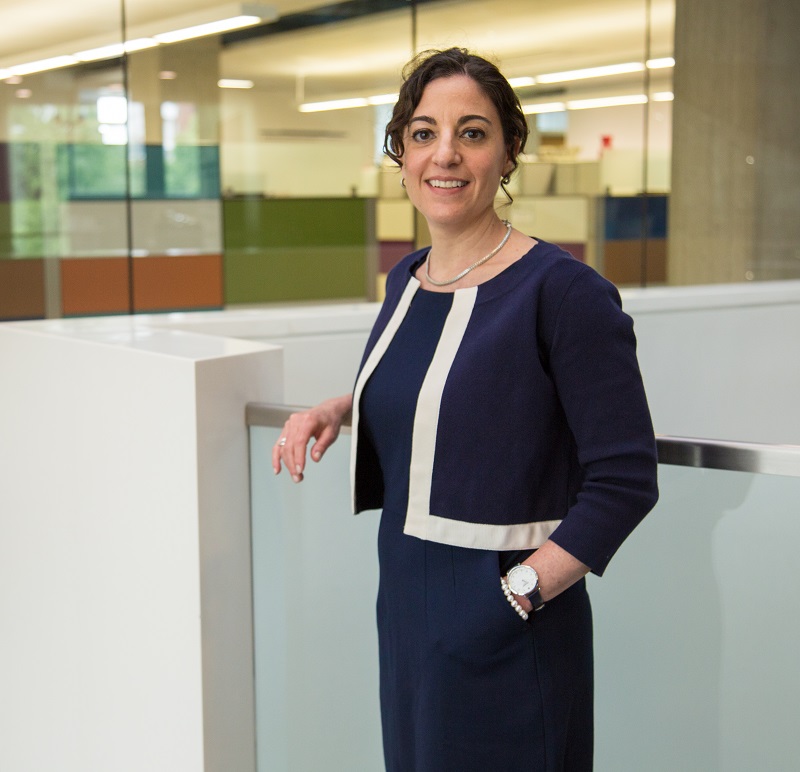
Winter 2018
The Traditions of Behavioral Medicine: A Look into SBM’s Past, Present and Future with Melissa Napolitano, 2018 SBM Fellow
Scherezade K. Mama, DrPH, Membership Council Chair

Melissa Napolitano, PhD
SBM membership has steadily risen over the past decade: As of December 2018, there are now over 2,600 current members. With the society’s 40th anniversary approaching, we sat down with a recently inducted Fellow, Dr. Melissa Napolitano, Professor at The George Washington University’s (GW) Milken Institute School of Public Health, to find out what has kept her coming back to SBM.
What is your history with SBM?
I have been an SBM member for 20 years. I started attending the Annual Meeting as a student, and I kept coming back to learn about the new and innovative science being conducted. SBM also provided an opportunity for me to present my own work and is an excellent forum for networking. I have served the society in many different capacities, including as a program submissions reviewer and, recently, as Co-Chair of the Physical Activity Special Interest Group (SIG).
What does it mean to you to be an SBM Fellow?
I am honored to be recognized for my dedication and scientific contributions to the field of behavioral medicine. Being selected by my peers to join this group of incredible scholars and practitioners is one of my proudest professional moments. This recognition extends beyond me to my department, school, and university. In an announcement, Dr. Lynn Goldman, Dean of the Milken Institute School of Public Health, noted that it was “an extraordinary honor, one that put [me] in a highly select group of scholars and, possibly a first for GW.” I even received a personal note of congratulations from the GW president, Dr. Thomas LeBlanc. I was delighted that my selection as an SBM Fellow was recognized by my Chairperson and Dean. I am excited about continuing the traditions of behavioral medicine and helping guide our future scholars in the field.
What are some of the benefits of SBM membership that made you want to become an SBM Fellow?
SBM is my professional home. It has provided me with an outlet to showcase my most innovative work and learn about cutting-edge science from my peers. Through the annual scientific meeting and other communications throughout the year, I have found valuable opportunities for professional networking. Becoming a Fellow not only provided recognition of my scholarly work, but also recognized my contributions to the field of behavioral medicine. I am eager to serve SBM in a leadership role and as a role model for emerging scholars. I have been teaching a Behavioral Medicine and Public Health course to our [GW] doctoral students this term; being a Fellow has provided me with a platform to expose them to SBM, the Grand Rounds webinar series, and other opportunities to join the SIGs. As a Fellow, I hope to continue to be active in being an expert consultant, taking part in the Physical Activity SIG activities, and communicating behavioral medicine job and fellowship opportunities.
This year’s Annual Meeting will coincide with SBM’s 40th anniversary. How do you see SBM evolving over the next 40 years to continue to meet members’ needs?
I see the organization building upon its foundation and continuing to advance the science and applied practice of behavioral medicine. SBM will remain an outlet for innovative research, implementation science, and applied behavioral medicine practice. I envision this will be through both in-person and digital outreach. Additionally, one area of which I am most proud is my dedication to providing networking and support opportunities for junior faculty, trainees, and students. As Co-Chair of the Physical Activity SIG, I helped bring back the “meet the expert” session, showcasing my commitment to providing mentorship and career development opportunities to trainees. This session has been well attended since its inception and has continued as a core of the Physical Activity SIG’s annual program activities. I believe SBM will continue to provide outlets like this (whether in person or virtually) to help support and guide future behavioral medicine leaders.